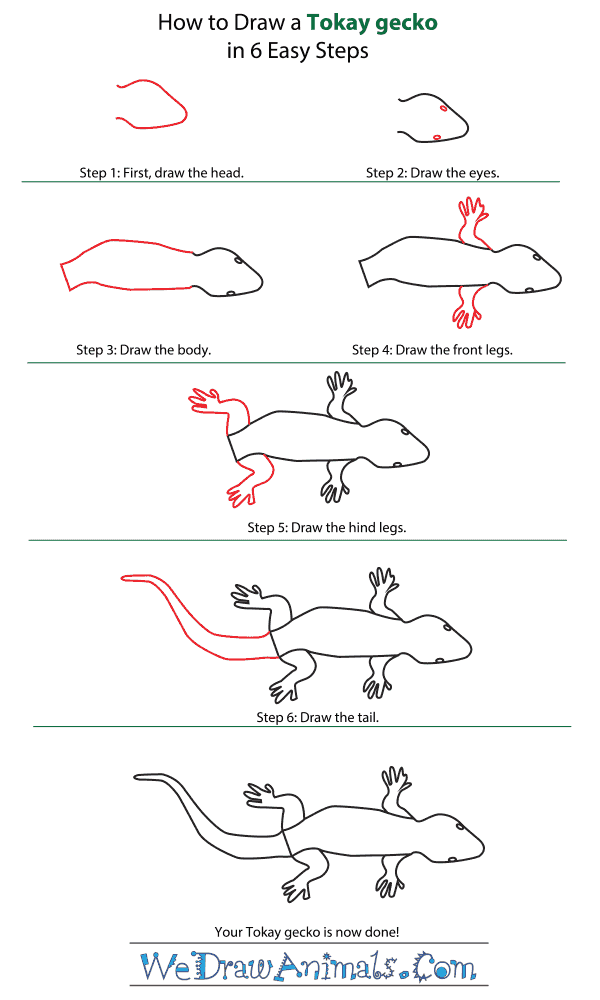In this quick tutorial you'll learn how to draw a Tokay Gecko in 6 easy steps - great for kids and novice artists.
The images above represent how your finished drawing is going to look and the steps involved.
Below are the individual steps - you can click on each one for a High Resolution printable PDF version.
At the bottom you can read some interesting facts about the Tokay Gecko.
Make sure you also check out any of the hundreds of drawing tutorials grouped by category.
How to Draw a Tokay Gecko - Step-by-Step Tutorial
Step 1: Let's begin with the gecko's head. Draw an oval shape that narrows at the mouth.
Step 2: Simply draw two circles for the eyes.
Step 3: Now we can draw the body. Connect it to the back of the head, and square it off at the end. Later we will add the tail.
Step 4: Draw two small front legs on either side. Draw the feet to look like human hands!
Step 5: Now you can draw the hind legs in the same manner, but make them extend backwards.
Step 6: Finally, you can draw the tokay gecko's tail. Connect it to the square part of the gecko, making it narrow and curve slightly. The tail is an important defense mechanism because a gecko can regrow it after a predator rips it off!
Interesting Facts about the TOKAY GECKO
The Tokay Gecko is a member of the reptile family and the scientific term for them is Gekko gecko. Another common name for this species is the Shut-Up Lizard, because its mating call sounds like it is saying “shut up.” The nocturnal species is native to the rainforest trees and cliffs of southeast Asia and western New Guinea. They also climb walls and ceilings of human homes with adhesive toes and eat mainly insects.
Did you know?
- The animal was first documented in 1758.
- They can grow up to almost 2 feet long.
- The creature weighs almost 1 pound.
- They are the 2nd largest Gecko species.
- The abduction of this species can earn you 12 years in jail.
These animals have a blue or grey body with yellow or red spots. This species is very popular for use as a pet, so domestication has reduced their population. Also, these animals can be sold for thousands of dollars each, since they are highly valued for their properties in medicine. As a result, the animal is becoming rare in some areas. For these reasons, governmental restrictions have been placed to limit the threat of extinction for this creature.







